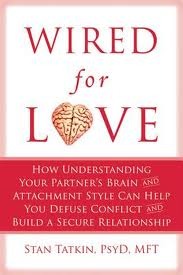More on this book
Community
Kindle Notes & Highlights
by
Stan Tatkin
Thus the needs we want met in our adult intimate relationship—those that were not met in childhood—are presented to persons who are woefully similar to the persons who did not meet those needs when we were children.
Your marriage is not about you. Your marriage is about itself; it is a third reality to which and for which you are responsible, and only by honoring that responsibility will you get your childhood and current needs met. When you make your relationship primary and your needs secondary, you produce the paradoxical effect of getting your needs met in ways they can never be met if you make them primary.
When we enter into a relationship, we want to matter to our partner, to be visible and important. As in the case of Jenny and Bradley, we may not know how to achieve this, but we want it so much that it shapes much of what we do and say to one another. We want to know our efforts are noticed and appreciated. We want to know our relationship is regarded as important by our partner and will not be relegated to second or third place because of a competing person, task, or thing.
What counts is their ability to be there for one another, no matter what.
The couple bubble is a term I like to use to describe the mutually constructed membrane, cocoon, or womb that holds a couple together and protects each partner from outside elements. A couple bubble is an intimate environment that the partners create and sustain together and that implicitly guarantees such things as: “I will never leave you.” “I will never frighten you purposely.” “When you are in distress, I will relieve you, even if I’m the one who is causing the distress.” “Our relationship is more important than my need to be right, your performance, your appearance, what other people
...more
The couple bubble is an agreement to put the relationship before anything and everything else. It means putting your partner’s well-being, self-esteem, and distress relief first. And it means your partner does the same for you.
Devote yourself to your partner’s sense of safety and security and not simply to your idea about what that should be. What may make you feel safe and secure may not be what your partner requires from you. Your job is to know what matters to your partner and how to make him or her feel safe and secure.
Don’t pop the bubble. Because the couple bubble has as its foundation a fundamental, implicit, and absolute sense of safety and security, neither of you should have to worry that the bubble is going to pop.
Make sure the bubble is mutually maintained and honored.
Plan to use your couple bubble. It provides a safe place in which you and your partner can always ask each other for help, rely on one another, and share your vulnerabilities.
The things we do to keep from getting killed often are exactly the things that keep us from getting into a relationship or staying in one.
some partners have a stronger right brain and weaker left brain. These partners tend to communicate and process threat with less emphasis on talk and more emphasis on feeling and expression. Other partners have a stronger left brain and a weaker right brain; their emphasis is more likely on logic, ideas, and talk, and less on feeling and emotional sensitivity.
Growing up, our parents’ or caregivers’ styles of relating set the standard by which we learned to adapt. Simply put, as we saw in chapter 2, our social wiring is set at an early age. Despite our intelligence and exposure to new ideas, this wiring remains virtually unchanged as we age.
Neuroscientists have observed that children who receive lots of positive attention from adults tend to develop more neural networks than do children deprived of social interaction with adult brains.
Because of good relationships early in life, secure children tend to have a well-developed right brain and insula, so they are adept at reading faces, voices, emotions, and body sensations, and at getting the overall gist of things.


